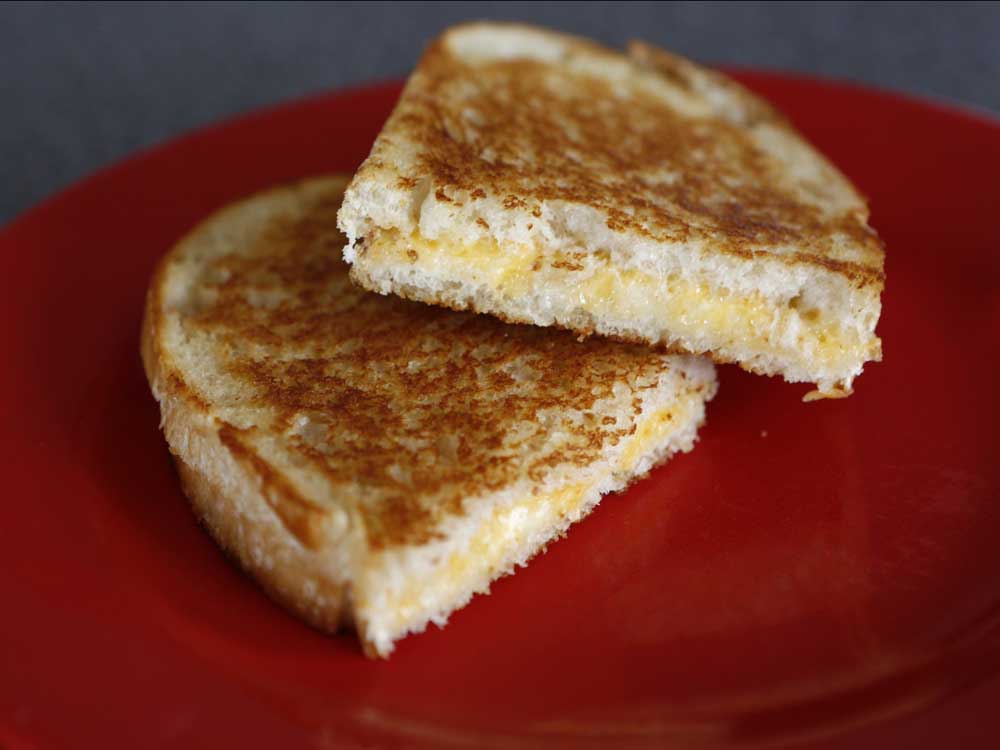Celebrating a cheesy sandwich classic
Published 12:00 am Tuesday, April 12, 2016

- Jarod Opperman / The BulletinThis is how a perfectly grilled cheese sandwhich should look.
Who knew that a sandwich could be so special as to have its own day, and its own month? Such is the case for the humble grilled cheese. Today is National Grilled Cheese Day, and, in fact, the entire month of April is designated as National Grilled Cheese Month to celebrate this classic comfort food.
Perhaps you remember it from childhood — white bread slathered in butter and grilled to perfection, making the inside ooey gooey with melted cheese — and, most likely, your mom served it with tomato soup. This duo nourished many a child through sickness and health as a quick-to-fix meal. And maybe, just maybe, that butter-crusted treat was also the first meal you learned how to prepare.
Trending
But, today’s grilled cheese isn’t yesterday’s grilled cheese — this comfort food staple has come a long way.
Now you can find gourmet restaurants nationwide devoted exclusively to the sandwich, including one in Portland called The Grilled Cheese Grill (it has three locations). You can munch your sandwich in an old school bus or a double-decker London-style bus for ambiance.
Grilled cheese sandwiches can be eaten for any meal — breakfast, lunch and dinner, plus appetizers, snacks and desserts, depending on what’s inside.
But the classic grilled cheese sandwich is simple — cheese between two bread slices.
The cheese
Not all cheeses are created equal for grilled cheese sandwich fillings. Some melt better than others; some don’t melt much at all. But they can be used for added flavor along with their meltable cousins.
Trending
In her book “Grilled Cheese Please!,” author Laura Werlin lists these cheeses as the best melting: American, Asiago, cheddar, colby, Gouda, Gruyere, havarti, Monterey Jack, mozzarella, provolone and Swiss.
Should the cheese filling be sliced or grated? Both will work, but shredding helps the cheese melt faster than a thicker-cut slab, as there’s more surface area exposed to the heat. And, of course, the point of the sandwich is that the cheese is evenly melted and oozing out of from between the bread slices, so the extra time spent shredding is worth it (or buy preshredded cheese).
The bread
While you may long for the soft, chewy, flattened white bread of your youth, today’s grilled cheese sandwiches have gone beyond. Any type of bread is fair game for this sandwich favorite, as long as it has one characteristic — the holes in the slices mustn’t be too large, or the cheese will ooze out.
Whole wheat and multigrain breads are ideal, but also consider sourdough and French, as well as specialty breads like cinnamon swirl, raisin, olive and walnut. For a different shape, try croissants (which flatten nicely) or English muffins. Even waffles can work, especially for a breakfast sandwich.
The basics
The bread/cheese combo is heated in a skillet until it’s crispy and golden-brown on both sides and the center is melted and drippy.
What goes on the outside of the bread to help with browning can vary. Most people use butter, but you can also use olive oil or even mayonnaise for a coating. Any of these can also be used on the inside of the bread slices for added flavor. Spread the coating evenly and all the way to the edges of the outer bread to ensure even browning.
Pile the bread with cheese — about a cup of shredded cheese per sandwich, or more depending on personal preference. Mix cheese types for an added flavor exchange. Then top with the second buttered bread slice, butter side out.
Whether you use a traditional cast-iron skillet, griddle or nonstick pan for cooking is up to you. All work equally well, though some traditionalists prefer cast iron.
There are two strategies for cooking your creation. One is to actually assemble the sandwich in the skillet before it’s heated with the buttered bread side down. The other is to fully heat the skillet first, then add the stacked sandwich. The former allows for a slower melting process; the latter browns faster, but the insides may not be fully melted.
Use medium heat to avoid burning, as a blackened grilled cheese sandwich is a little less appealing than a gently browned one. Cook for three to four minutes on the first side, pressing flat with a spatula. Then carefully turn the sandwich over, and cook on the second side for two to three minutes until it’s toasted and the cheesy filling is totally melted. Covering the pan while cooking will help hold in the heat and hasten the melting process, as will pushing the sandwich flat with a spatula, but both are optional.
Remove the sandwich from the skillet, cut in half and serve immediately.
Inside out?
Some grilled cheese aficionados like to put cheese on the outside of the sandwich as well as on the inside, for a crispier bread coating. If you want to give it a try, just press some grated cheese onto the buttered bread and cook as usual in a nonstick pan.
A new shape
Before cooking, cut the bread into fun shapes using cookie cutters, or cut a hole in one slice of bread using a cookie cutter so the melted cheese will peek out (or fill it with an egg). Both of these options are fun for kids (or kids at heart).
To serve grilled cheese as an appetizer, cut off the crusts and cut the cooked combo into small squares or strips.
If you’re using artisan breads, they may already be in a nontraditional shape when you begin — such as round or oblong slices.
Beyond the basics
Thinking beyond the basic grilled cheese sandwich is where the fun begins, as almost anything can be added for pizzazz.
Those options include meats, fruits, vegetables and sauces or spreads, and they can be used in multiple combinations.
Any meat or seafood can be added to a grilled cheese — think bacon, ham, turkey, chicken, salami, pepperoni, small meatballs, crab, shrimp, tuna, etc. Be sure your choice is precooked and perhaps slightly warmed if it’s going in the middle of the combo.
Vegetables, either raw or precooked, can add crunch and additional nutrition to the cheesy filling. Consider zucchini or eggplant slices, artichoke hearts, spinach, sliced beets (pickled or plain), chopped olives, roasted peppers — even cooked potato slices.
Accents such as jalapeños, pickles, grilled mushrooms, onion, sauerkraut and chutney pack a punch with the gooey cheese. And for crunch, there’s always potato chips or crumbled taco chips.
And, of course, fruits pair well with various cheeses. Think about adding some fig, apple or pear slices, a few date chunks or even banana rounds.
But don’t stop there — lather on some sauce like Sriracha; marmalade; fruit, tomato or bacon jam; peanut butter; pesto; barbecue sauce; or another favorite spread compatible with your chosen cheese and the occasion for which your creation is being served.
— Reporter: gwizdesigns@aol.com








